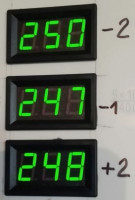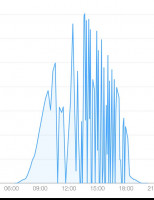Sure, it's a star with an N in the center. I control these heaters in cascade as needed, including 1, 2, or 3 phases.
Currently, the algorithm is based on date (order rotation), time and demand (tank temperature), but I can see
that I have to change it to depend on the phase tensions and react to their excessive increase no matter what the rest.
In general, this approach to the subject of heating and the current algorithm changes like in a kaleidoscope.
The original assumptions (from a year ago) fell to hell long ago. Life...
Added after 3 [hours] 8 [minutes]: krawietz wrote: Therefore, the question remains whether each exceeding of 253V, I assume that it should disconnect the inverter for 3s or not.
If you ask, I will answer from the autopsy.
After exceeding 253 by 1V, the inverter works, but already 254 or 255 causes switching off after a while (about 10 seconds),
but not for 3 seconds, but for more than a minute, because it stops first, then it tries 60 seconds and how it is OK with the voltage
it also starts in about a minute, i.e. this is how long it takes for him to reach the maximum (at a given moment) power.
Growth is slow, no spikes.
It is easy to calculate what losses it gives, because when it is chewed with voltage, it "works" for about 10% of the possibilities, and the effect it gives can be seen below.
We are talking about version 8.8KTL-X, version SF4ES008, with soft 2.2 set to code 12, i.e. Poland.






